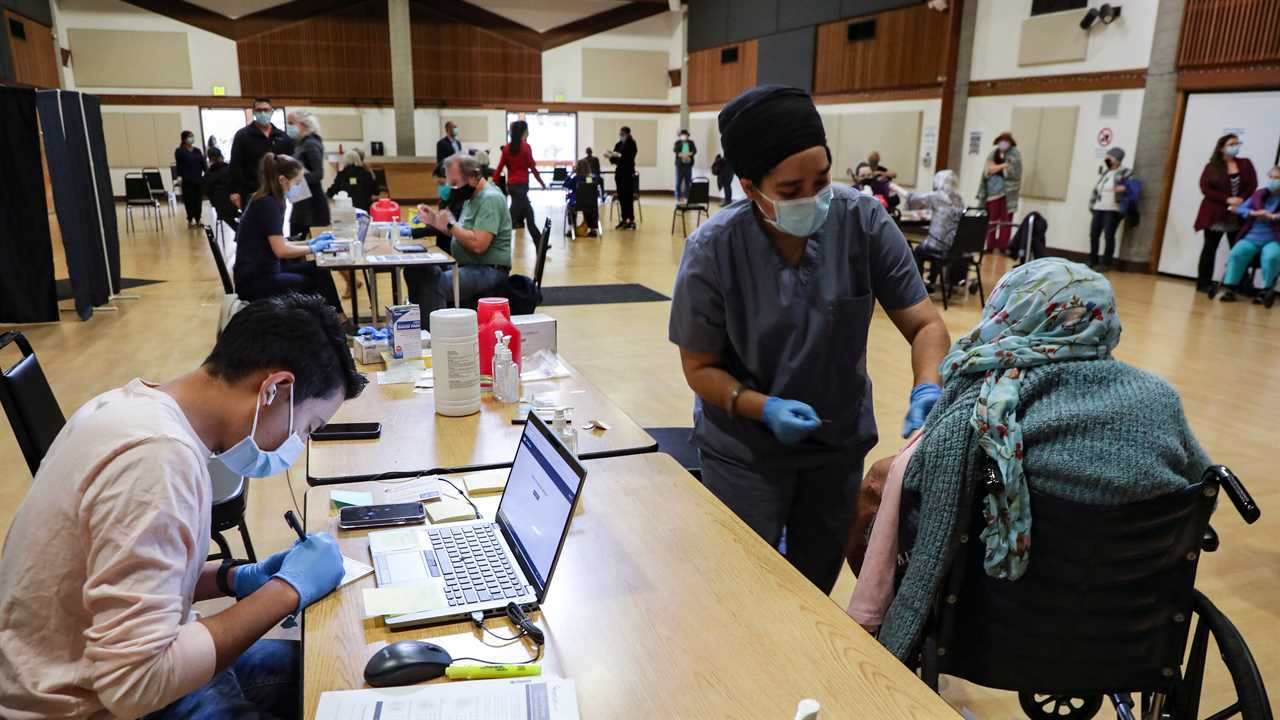
WASHINGTON — The Pentagon is considering sending active-duty troops to large, federally run coronavirus vaccine centers, a major departure for the department and the first significant sign that the Biden administration is moving to take more control of a program that states are struggling to manage.
The Federal Emergency Management Agency is hoping to set up roughly 100 vaccine sites nationwide as early as next month, and on Wednesday night requested that the Pentagon send help to support the effort. The sites, and the use of the military within them, would require the approval of state governments.
While many state governors have turned to their National Guard units to assist with the mass effort to vaccinate Americans and outrace more contagious variants of the coronavirus, the Pentagon’s role has been largely behind the scenes, providing help with logistics.
During his confirmation hearings last week, Lloyd J. Austin III, the secretary of defense, said he would increase military support to manage the pandemic. On Thursday, Max Rose, Mr. Austin’s senior adviser for Covid-19, said his first topic of conversation in meetings with senior leaders had been making this the “No. 1 priority.”
Sending troops to help set up sites, assist with logistics and even put shots in arms is something the Defense Department is “actively considering,” Mr. Rose said. He declined to provide specifics, saying that Pentagon officials would be reviewing the request from FEMA carefully.
“We are obviously going to source this request,” said John F. Kirby, the Pentagon press secretary, noting that, after a review, it would most likely be filled with more National Guard, reserve and active-duty troops.
“I would say we are talking days, certainly not weeks, to get this sourced,” Mr. Kirby said. “We know there’s an urgency.”
The military is likely to provide thousands of troops in the next several months, not unlike the mobilization that the Trump administration put together a few years ago to supplement enforcement at the border with Mexico.
Many states and territories have set up large vaccination sites, and over half are using National Guard members to give shots, drawing on doctors, nurses, medics and others skilled in injections. FEMA, an agency within the Department of Homeland Security, has already told six states, two territories and Washington, D.C., that it would spend $1 billion on vaccine measures, including community vaccination sites.
It was not immediately clear where the vaccines would come from for new federal sites; they would most likely be drawn from the supply already given to individual states and territories. Most states have not come close to administering the vaccine they have been given.
Gov. Ron DeSantis of Florida, a Republican, has already said he does not want “FEMA camps” in his state. “That’s not necessary in Florida,” he told reporters last week after the Biden administration released its plan to address the pandemic, including the FEMA sites. “All we need is more vaccine.”
The Trump administration largely preferred the states to manage efforts to combat the pandemic, leaving governors to acquire protective gear for health care workers and manage testing, contact tracing and other aspects of response. While it cut deals with pharmaceutical companies to expedite the development of vaccines and offered guidance on whom to prioritize in receiving shots, it largely left states to manage their supplies.
State governments have run into a number of snags in getting their vaccines into arms, including resistance among some health care and nursing home workers and others in prioritized groups to the vaccine, and struggles in medical centers to manage their supplies.
The Biden administration has set goals to get more Americans vaccinated quickly, but it is not clear that there will be enough supply should it succeed in speeding up the logistical system, particularly with many Americans now awaiting second shots.
The federal government had been reimbursing states — many of them struggling from large drops in tax revenue — for only 75 percent of their National Guard costs associated with coronavirus relief. The administration will increase that to 100 percent, including for support needed to distribute and administer vaccines, until the end of September.
Zolan Kanno-Youngs contributed reporting.






